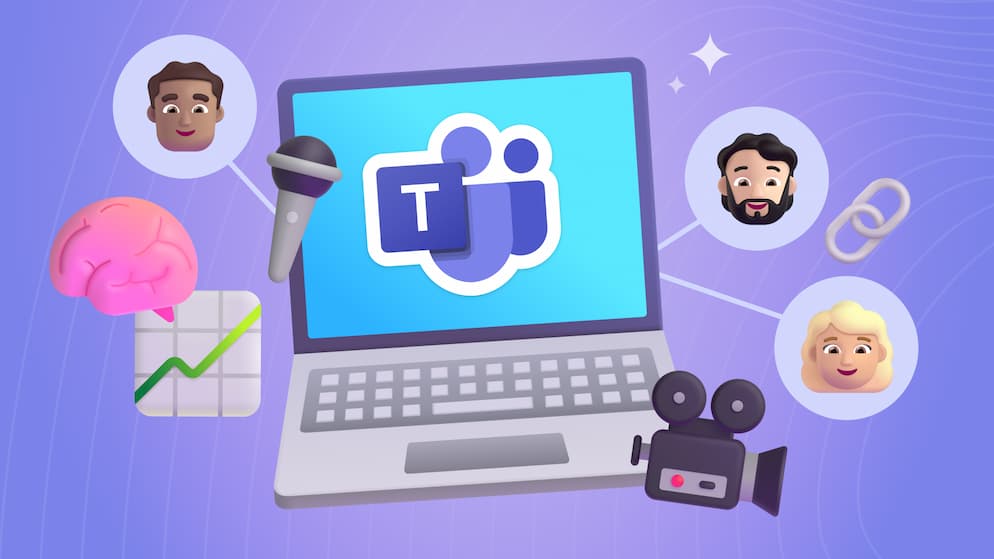Why We Practice Empathetic Marketing (and How You Can Too)
In today's blog, you'll meet our marketing team and get a lesson on what empathetic marketing is and how you can apply empathetic marketing in your business!
Introduction
We're going to guess some of you reading this blog are either a part of our newsletter list, a customer, a subscriber on our YouTube Channel, or you follow us on social media. Hopefully, you're all of those things 😉
No matter where you choose to engage with us, we try to always provide you with helpful content and information that genuinely benefits you and your workplace. Our marketing team (which you'll meet here in a second) leads with an empathetic approach at the forefront so our audience receives value, no matter where they're interacting with us.
Empathetic marketing isn't always the default approach for tech companies, but it works well for us. We're going to break down what empathetic marketing is, why we do it, and how you can implement it in your company's marketing strategy. And no, you don't need to be a tech company to try out empathetic marketing.
First, Meet the Marketing Team
So, it may surprise you that our teams is only made up of three people. Yep, just three of us.
.avif)
We have:
Mitch — He's the head of marketing. He oversees all our marketing efforts and makes sure it's aligned with the bigger picture and that we are providing the best content possible.
Livvy — She's our Marketing Coordinator and responsible for our social media, writing our newsletters, general copy, publishing blogs, and podcasts. She also is responsible for scheduling that content out to our team.
Benjamin — He's our Videographer. He manages our YouTube channel, records and edits all of our YouTube videos, shorts, and podcasts as well. Along with that, he manages our studio space and films all our live webinars.
For just three people, a lot gets done!
What is Empathetic Marketing?
In simple terms, empathetic marketing is putting yourself (the marketer) in your audience's or customer's position and being able to understand the problems they have. It's leaving behind the need to hit metric goals or to go 'viral' and instead meeting your audience where their pain points are. It's asking, "What am I solving and who am I helping with my content?"
“The day you stop losing sleep about your own success and start losing sleep over your customers’ success is the day your business will start growing again.” - Donald Miller, Marketing Made Simple
“Marketing is the generous act of helping someone solve a problem. Their problem.” - Seth Godin, This Is Marketing
At Bulb Digital, we look at what our customers struggle with and put those problems and solutions out on our platforms for others to learn from. Afterall, our mission statement is "Make Others Successful," and we want to make sure we deliver that valuable help to our audience.
On the other hand, we are empathetic to a very specific audience, and this is a freeing thing. By choosing who we can help we can help solve very specific problems and let someone know early if they are looking in the wrong place.
“Everything gets easier when you walk away from the hubris of everyone. Your work is not for everyone. It’s only for those who signed up for the journey.” - Seth Godin, This Is Marketing

SELF ASSESSMENT
Is your business getting full value from your M365 subscription?
Billions of dollars are wasted each year on underused subscriptions. Take 3 minutes to find out where your tools are driving results, and where they’re holding you back.
Find Out Now

Is Team Communication Holding You Back?
Find Out in Just 2 Minutes.
Take our quick scorecard to uncover communication gaps and hidden barriers within your team.
Why Do We Do This?
We just published a blog about the Curse of Knowledge. This is one of the most fundamental biases our industry faces, especially as we get into the technical nooks and niches of Microsoft tools. We often assume others have the same level of understanding about technical aspects as we do. But that's not the case. We understand the difference a bit of knowledge and helpful guidance can make. So we write blogs about the problems we get asked about. And it has lead to some of our favorite content: a Help Desk App, Lists of the Collaboration Tools, or a walkthrough of the new features in Loop.
The work of empathetic marketing is realizing that we are not you. We, the marketing team, are not citizen developers and even our experts are not in the same place that you are with a project or deadline. So, we allow ourselves to be a gathering place of problems in the comments, Office Hours questions, and client engagements. We made the decision to care just as much as you so that you can be successful. While we have the curse of knowledge from our tools and experience we can practice the discipline of humility to teach from that perspective.
Before this you might have thought we were guiding you through the mazes of Matt Dressel's mind as thought leaders .
Nope.
You lead the way, and we walk alongside you, showing the next few steps to take at a time. This is the essence of empathetic marketing. Let your customers show you the problems. And work to solve them by caring as much as they do.
How to Try This At Your Workplace

Implementing empathetic marketing in your organization involves shifting your perspective from internal concerns to what your customers truly care about. It can feel obvious at times, but obvious is not the same as easy. Here are our tips to move your marketing from interrupting noise to empathetic interactions.
1. Research and polling
Lots has been said about customer persona creation. Perhaps you have seen a marketing team's imagination run wild to create an unrealistic customer with only one problem - that they don't have your product. Of course, this isn't a real customer.
By polling your audience, inviting them to share their real problems and even alternative solutions to what you might offer. Polling allows your marketing team to be realistically empathetic. Stop using your imagination and start spending time with your customers.
“Managers faced with too much general information tend to average results, blur boundaries, and miss distinct, segmented market opportunities." - Spend a Day in the Life of your Customers
2. Inviting a conversation and creating an available resource
One of our favorite discoveries is that in creating content we have people that resonate deeply with our problems with tech, or our understanding of solutions. It's why we created The Workplace community to share the burden of problems. We use this as a sound board for new ideas and trying them out before a full build out.
3. Share broadly with your audience
Your customers are your future. They'll tell you what's coming and this is especially true for new customers. Take feedback and bad reviews and turn them into KPIs and Goals.
It could mean offering top-notch products, creating valuable content, or being there for your customers during critical moments. By meeting your customers where they are and taking the next steps with them, you can transform generosity into genuine value. Give it a try, and you might be amazed at the positive impact it can have on your business and customer relationships.
Conclusion
Finding your customers and coming to them with empathy for their problems often could be one of the more exciting things you do for 2024. Thank you for being a part of our community. Let's continue this empathetic journey together!
Resources
Should You Listen to The Customer?
Spend a Day in the Life of Your Customers







.jpg)







